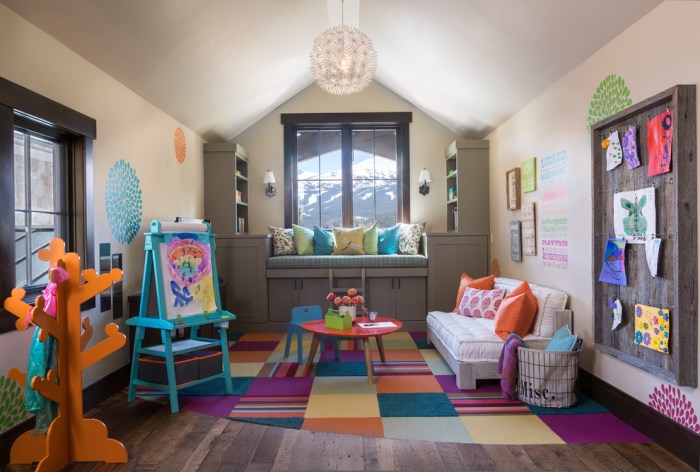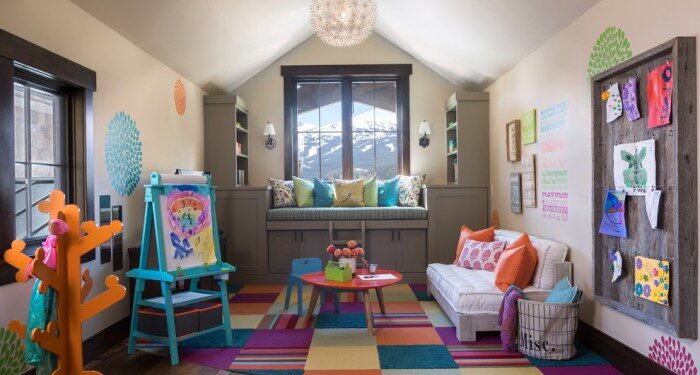Embarking on the journey of designing a child-friendly home environment opens up a world of possibilities to foster growth and development in young minds. From safety to creativity, every aspect plays a crucial role in shaping a space where children can thrive.
As we delve deeper into the intricacies of creating a space that caters to the needs of children, the importance of thoughtful design and functional elements becomes apparent.
Importance of a Child-Friendly Home Environment

Creating a child-friendly home environment is crucial for a child's development as it plays a significant role in shaping their physical, emotional, and cognitive growth. A well-designed space can have numerous benefits for children, enhancing their safety, creativity, and independence.
Enhancing Safety
A child-friendly home ensures that the environment is safe and secure for children to explore and play without constant supervision. This includes childproofing measures such as installing safety gates, securing furniture, and keeping hazardous items out of reach.
Promoting Creativity
A thoughtfully designed space can inspire creativity and imagination in children. Providing them with areas for artistic expression, such as a designated art corner or a play area with open-ended toys, can foster their creativity and innovative thinking.
Fostering Independence
A child-friendly home encourages independence in children by creating spaces that allow them to make choices and decisions on their own. This can include child-sized furniture, accessible storage solutions, and age-appropriate chores that empower children to take on responsibilities.
Designing Safe Spaces
Creating a safe environment for children is crucial to their well-being. Childproofing the home, selecting non-toxic materials, and setting up designated play areas are essential steps in designing a child-friendly home.
Childproofing the Home
- Install safety gates at the top and bottom of stairs to prevent falls.
- Secure furniture to the walls to prevent tipping.
- Cover electrical outlets with safety plugs.
- Keep small objects and choking hazards out of reach.
- Use window guards and cordless blinds to prevent accidents.
Selecting Non-Toxic Materials
- Opt for furniture made from natural, non-toxic materials like solid wood or metal.
- Choose flooring options like hardwood, bamboo, or cork that are free from harmful chemicals.
- Select paints, finishes, and decor items that are low-VOC and lead-free.
- Avoid synthetic materials like PVC and flame-retardant chemicals in textiles.
Creating Designated Play Areas
- Set up a playroom or corner with soft flooring and ample storage for toys.
- Use child-sized furniture and shelves to encourage independence and organization.
- Ensure play areas are well-lit and have good ventilation.
- Regularly inspect toys for broken parts or choking hazards.
Incorporating Interactive Elements
When designing a child-friendly home environment, it's essential to incorporate interactive elements that engage and stimulate a child's mind
Integrating Educational Toys, Games, and Books
- Provide a variety of educational toys that encourage learning through play, such as building blocks, puzzles, and shape sorters.
- Incorporate interactive games that promote problem-solving skills and critical thinking.
- Create a cozy reading nook with a selection of age-appropriate books to foster a love for reading.
Stimulating Senses with Colors, Textures, and Patterns
- Use bright and vibrant colors to create a visually stimulating environment that captures a child's attention.
- Introduce different textures like soft rugs, smooth surfaces, and tactile elements to encourage sensory exploration.
- Incorporate patterns in decor and furnishings to add visual interest and promote cognitive development.
Designing Spaces for Active Play and Imagination
- Create designated play areas with ample space for physical activities like running, jumping, and playing with toys.
- Include open-ended toys like blocks, dress-up clothes, and art supplies to inspire imaginative play.
- Set up a creative arts and crafts corner where children can explore their artistic talents and express themselves through various mediums.
Creating Functional and Organized Spaces
Creating a functional and organized space in a child-friendly home is essential for promoting a sense of order and reducing clutter. By incorporating storage solutions and furniture designs that cater to children's needs, you can encourage tidiness and make the space more conducive to various activities like play, learning, and relaxation.
The Importance of Organization
Maintaining an organized home environment is crucial for children, as it helps them develop a sense of responsibility and independence. By providing designated spaces for their belongings and activities, you can teach them valuable organizational skills that will benefit them in the long run.
- Utilize storage bins and baskets to keep toys and other items neatly organized.
- Incorporate shelves and cubbies at child-friendly heights for easy access.
- Label storage containers to help children identify where items belong.
- Create designated areas for specific activities, such as a reading nook or art corner.
Optimizing Space for Activities
When designing a child-friendly home, it's important to optimize space to accommodate various activities that promote creativity, learning, and relaxation.
- Use multi-functional furniture, such as a storage ottoman that doubles as a seating area.
- Consider adjustable furniture pieces that can grow with your child.
- Create a designated homework station with a desk and storage for school supplies.
- Maximize vertical space with wall-mounted shelves to free up floor space for play.
Last Point
In conclusion, crafting a child-friendly home environment is not just about aesthetics but about nurturing a space that nurtures a child's well-being and imagination. By incorporating safety measures, interactive elements, and organized spaces, we pave the way for a harmonious blend of playfulness and practicality.
General Inquiries
How can I childproof my home effectively?
To childproof your home effectively, start by securing furniture to walls, installing safety gates, covering electrical outlets, and keeping hazardous items out of reach.
What are some non-toxic materials suitable for children's furniture and decor?
Opt for materials like solid wood, organic cotton, and low-VOC paints to ensure the safety of children in your home environment.
How can I create designated play areas that are both fun and safe?
You can create designated play areas by using soft flooring, organizing toys in bins, incorporating child-sized furniture, and ensuring adequate supervision in those spaces.



